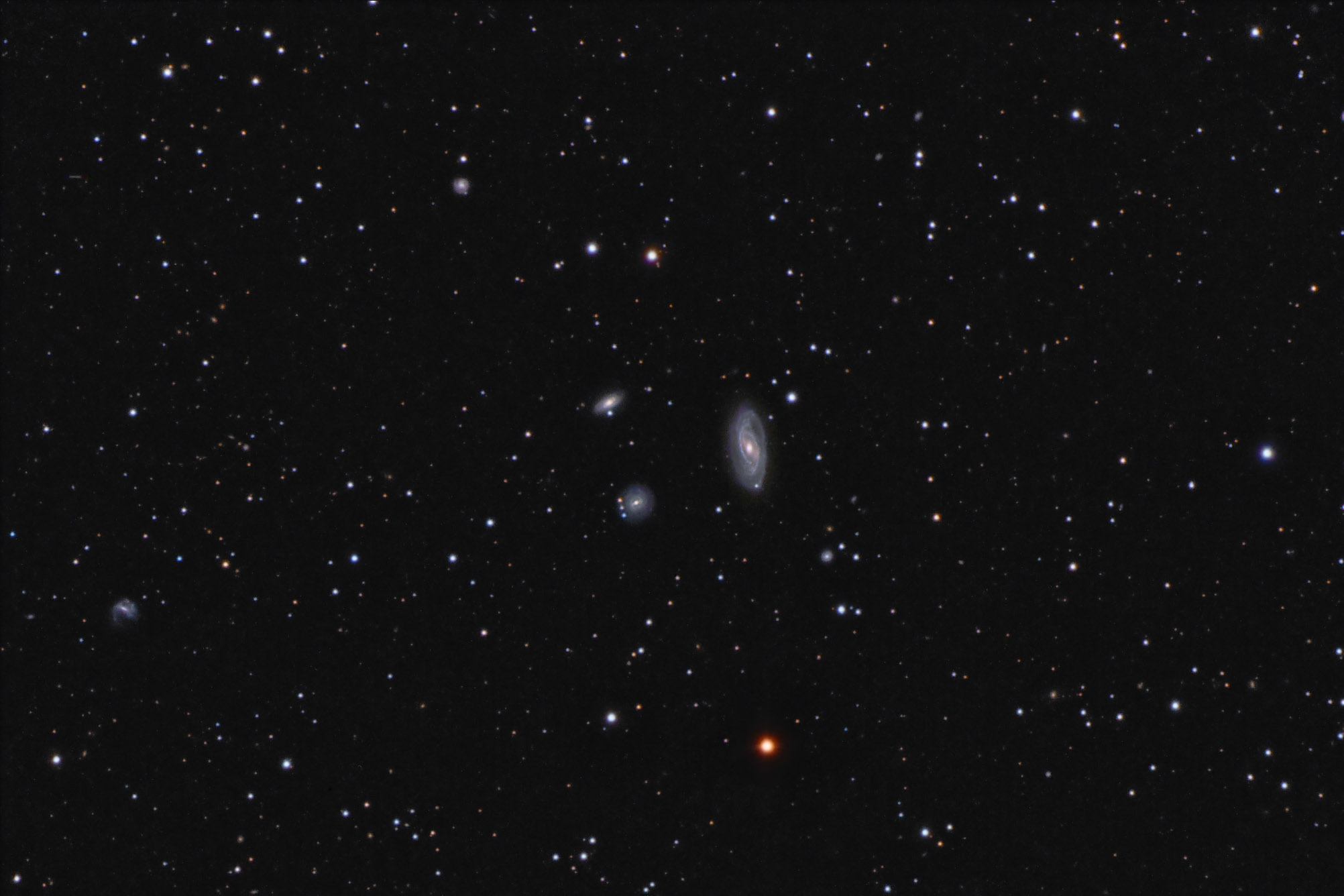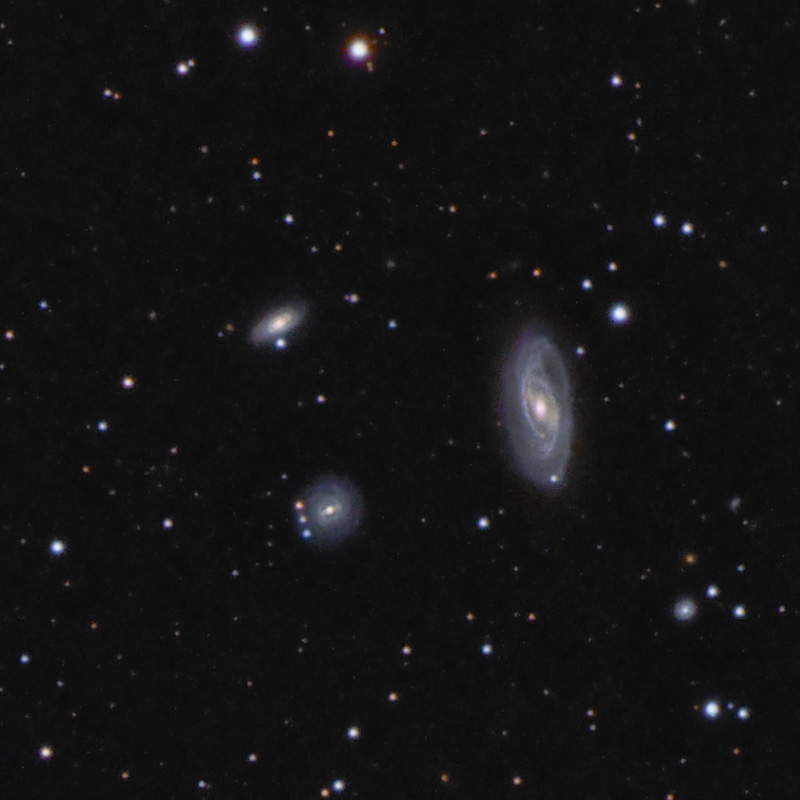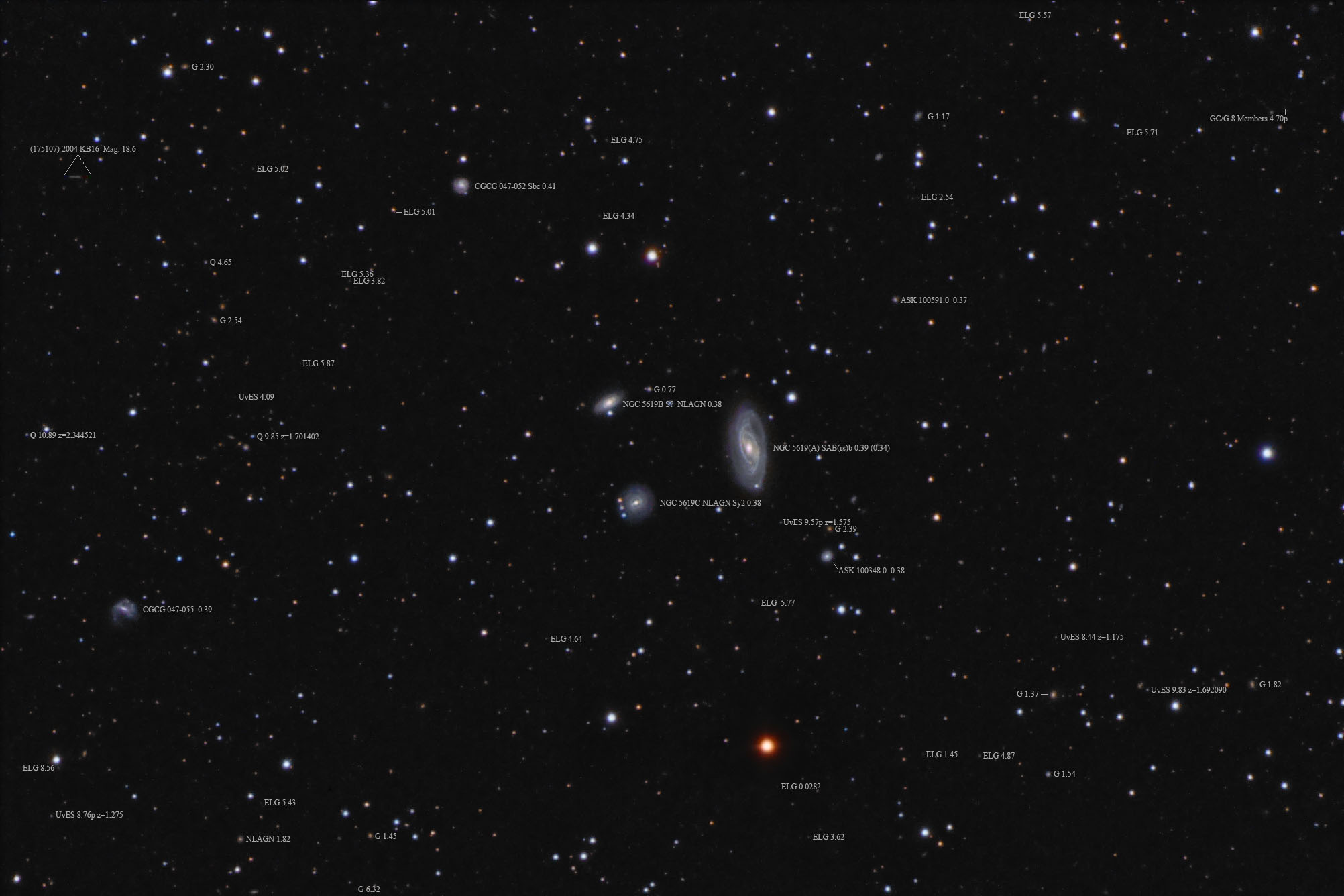| Description | Images |
Object name: NGC5619Designation(s): NGC5619, The WBL507 group of 4 galaxies is located in northwestern Virgo almost 400 million light-years from us. Three of the members are obvious; NGC 5919, NGC 5919B and NGC 5919C (NGC 5919 is also known as NGC 5919A). I just don't know which of many other galaxies at this distance in the image is the fourth. Other catalogs say the group has 8 members (USGC U625), 10 members (Mr19:[BFW2006] 04483) and 14 for Mr18:[BFW2006] 02293. Seems to be a define your own group field. While well removed from the first three I'll just say CGCG 047-055 makes a good choice for the 4th member. At least these 4 show signs of possible interaction. NGC 5619 has an odd inner red arm and a very oval ring of blue arms coming off the bar. Otherwise, it is rather low in surface brightness for such a large galaxy. NGC 5619B and C are narrow line active galactic nuclei galaxies. While not a certain sign of interact this is often the case with such galaxies. NGC 5619C also meets Seyfert 2 spectral specs also another indication of possible prior interaction. I can't find much on CGCG 047-055 though it is obviously highly distorted with much of the southern half of the galaxy appearing missing. NGC 5619 is a huge spiral. If the redshift distance is right it is nearly 250,000 light-years across, nearly twice the size of the Milky Way and our galaxy is an unusually big spiral at half that size. NGC 5919B and C are our size at about 115,000 light-years across. They look rather dinky compared to NGC 5619. CGCG 047-055 is "only" about 75,000 light-years across though that is about average for a spiral. NGC 5619 was found by John Herschel on April 10, 1828 Related Designation(s):2MASS J14271824+0448102, 2MASX J14271827+0448103, CGCG 047-044, CGCG 1424.8+0501, HDCE 0872 NED002, HOLM 645A, IRAS 14248+0501, IRAS F14247+0501, KTG 57A, LDCE 1058 NED002, MCG +01-37-012, Mr18:[BFW2006] 02293 NED08, Mr19:[BFW2006] 04483 NED03, Mr20:[BFW2006] 08102 NED03, NGC 5619, NGC 5619A, NGC5619, NSA 017995, PGC 051610, SDSS J142718.22+044810.1, SDSS J142718.23+044810.1, SDSS J142718.23+044810.2, UGC 09255, USGC U625 NED06, UZC J142718.2+044809, VV 408, WBL 507-001, WBL 514:[HIV2012] 0275, [BFW2006] J216.82594+04.80282 , [HIV2012] 2781, [PVK2003] J216.82597+04.80282 , [TTL2012] 015870, |


